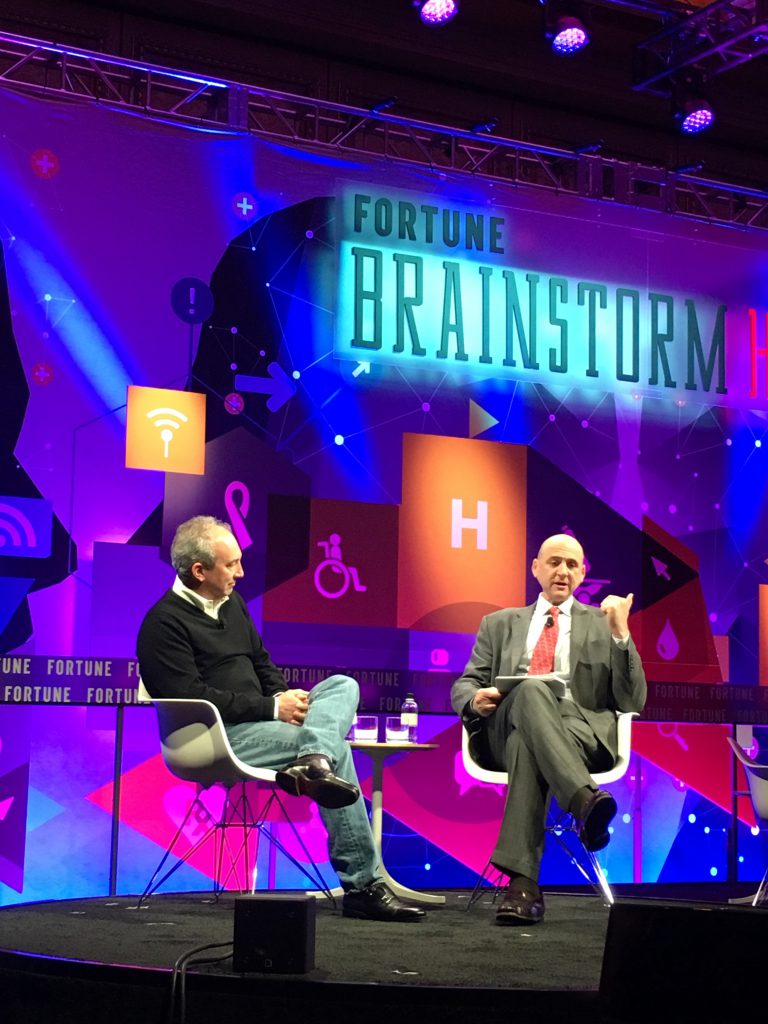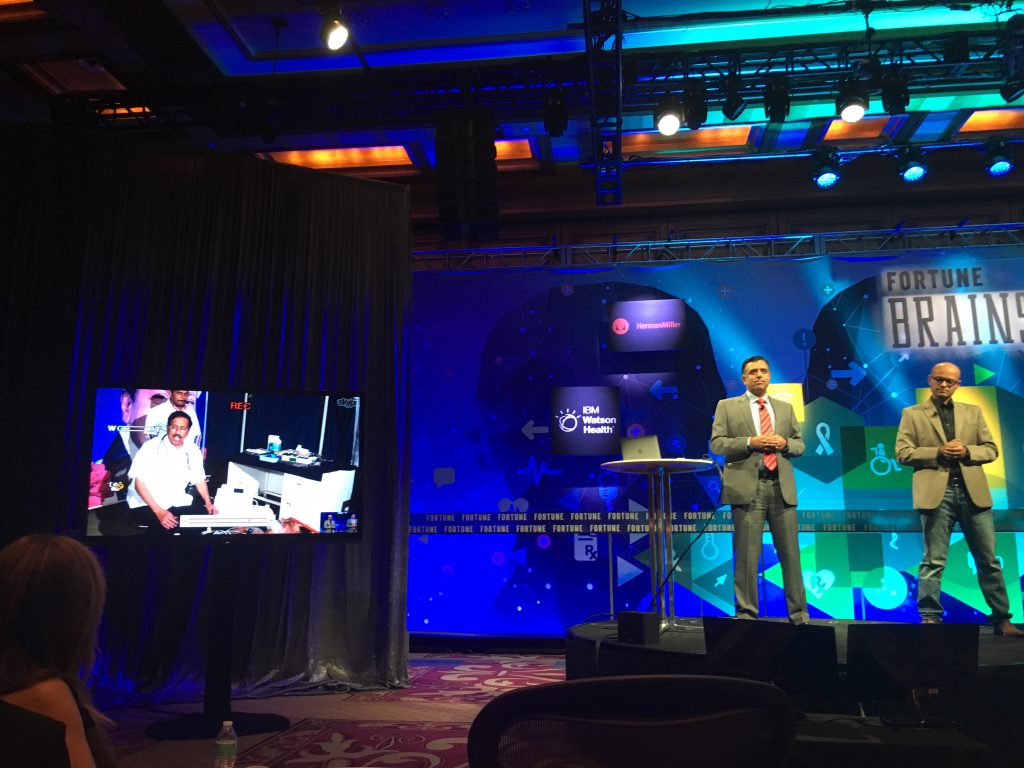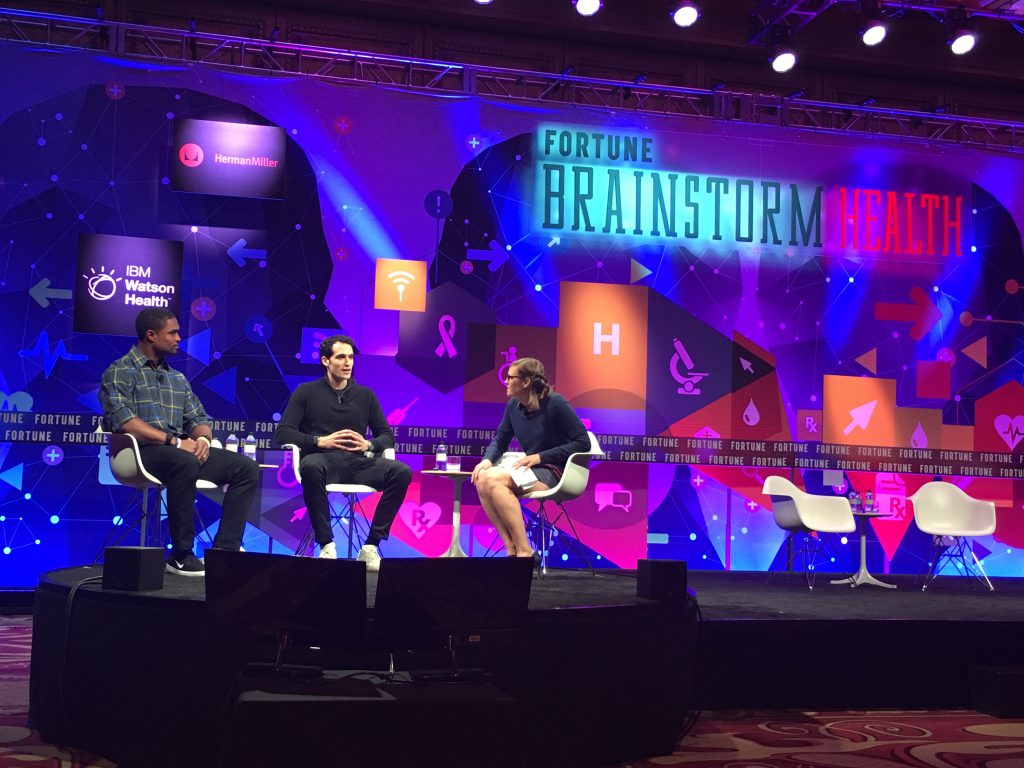Last week I attended the Fortune Brainstorm Health Summit in San Diego, which had a theme of ‘Accelerating the Health Revolution’. It was two days of fascinating conversations both on stage and off with the primarily US based healthcare leaders in attendance, and one of the things that struck me was that even while we continue to grapple as an industry with how we truly do accelerate that pace of change and speed up the technology driven disruption of healthcare, there is an increased understanding of some of the challenges that will inevitably result.

The technology exists to drive significant improvements in our ability to diagnose conditions at an earlier stage, but that is generating a whole new set of conversations around understanding when it’s appropriate to intervene. While our natural inclination may be to believe that early treatment is always the better option – and in many instances that’s definitely true – it needs to be balanced against the risk of what that treatment may consequentially cause. If it’s medication that’s prescribed then the potential adverse effects experienced in the short and long term come into play, if it’s surgical or procedural then there’s the corresponding risk associated with exposing more people to treatment related morbidities. The other aspect that can’t be ignored is that treatments of any kind cost money, and that generates a whole additional economic conversation around cost and benefit. While in some cases the benefit of spending now on early intervention or prevention vs the cost of managing and treating fully developed conditions is clear, there are many where the evidence just isn’t readily available resulting in really challenging decision making.
The question around who ultimately makes those decisions is also becoming more interesting. Clearly governments as funders and regulators have a big role to play, as do physicians who are making the clinical recommendations and decisions, but the rise of the patient as a key decision maker is a significant (and I would argue much needed) change to the previous passive role that patients were expected to play. Lots of moral, legal and financial decisions and discussion to be had, and in the words of the Co-Chairs of the event Clifton Leaf and Dr David Agus, with discourse comes understanding and that’s why these kinds of conversations are so important.

In addition to the big picture questions we were being challenged with, there were a lot of fascinating updates around some of the advances that are being made. As a pharmacist by background, I particularly enjoyed some of the pharma related presentations. Intarcia have developed an implantable micro pump and are now working on delivering a once yearly preventative medicine for HIV. They’ve had to work on solving a number of problems to be able to develop this solution, firstly having to find a format where proteins and peptides can be stabilised in a format that supports up to three years of efficacy at body temperature. They’ve also had to develop the actual micro pump delivery system contained within the implantable device, and lastly the implantation system that sees it actually inserted into the patient’s arm easily and safely by healthcare workers in remote locations such as sub Saharan Africa where HIV is most prevalent.

Braeburn Pharmaceuticals is another company working in the implantable and long acting injectable space, with their focus on neurological and psychiatric disorders where medication adherence is essential rather than a nice to have. Both of these companies spoke the challenge for regulators in the work they were doing, where a new level of expertise is required to effectively evaluate and approve their products. The impact these type of products have the potential to deliver is significant, not just in terms of the improved treatment outcomes delivered by removing the adherence from the equation, but also for payers who currently regularly find themselves in the position of funding costly medicines that patients largely don’t take. Fascinating work, and work that has the potentially to have a big impact for patients in both the prevention and treatment of chronic conditions.
One of my favorite presentations was a live streamed demonstration of GE Healthcare’s remote ECG product as utilised by Tricog Health in regional India. We watched as a cardiologist on stage in San Diego reviewed the ECG of a patient in a doctors clinic in India, making a diagnosis in real time as to what that patients current cardiac health status was. The Indian physician spoke passionately about the difference this was making to him and his patients, in an area without ready availability of cardiologists and patients dying from incorrectly or undiagnosed cardiac events as a consequence. This was a great demonstration of how incredibly impactful technology can be in delivering health expertise in a region where there just isn’t any local capacity, and making a real and tangible difference.

As a long time enthusiast in the wearable tech and quantified self space, I also really enjoyed learning about Whoop, the first professional athlete wearable designed to manage recovery. The premise of their product is to use it to create a mindshift where athletes view their body performance as a 24/7 premise rather than just for the duration of the game or training times. I particularly liked they way they’d overcome the challenge of data gaps by developing a neat little clip on battery pack which allowed the device to be worn consistently rather than having to be taken off to charge, and their data ownership model was also really interesting. Athletes own their own data, and have the ability to commercialise it if they wish to, which in this world of fantasy leagues and player performance competitions has some fascinating potential business models waiting to emerge.

There’s a lot more content available on the Fortune website on these presentations and more, and I’d like to say a big thank you to Fortune for the invitation to participate again this year, it was well and truly worth the whirlwind trip to and from Australia!
